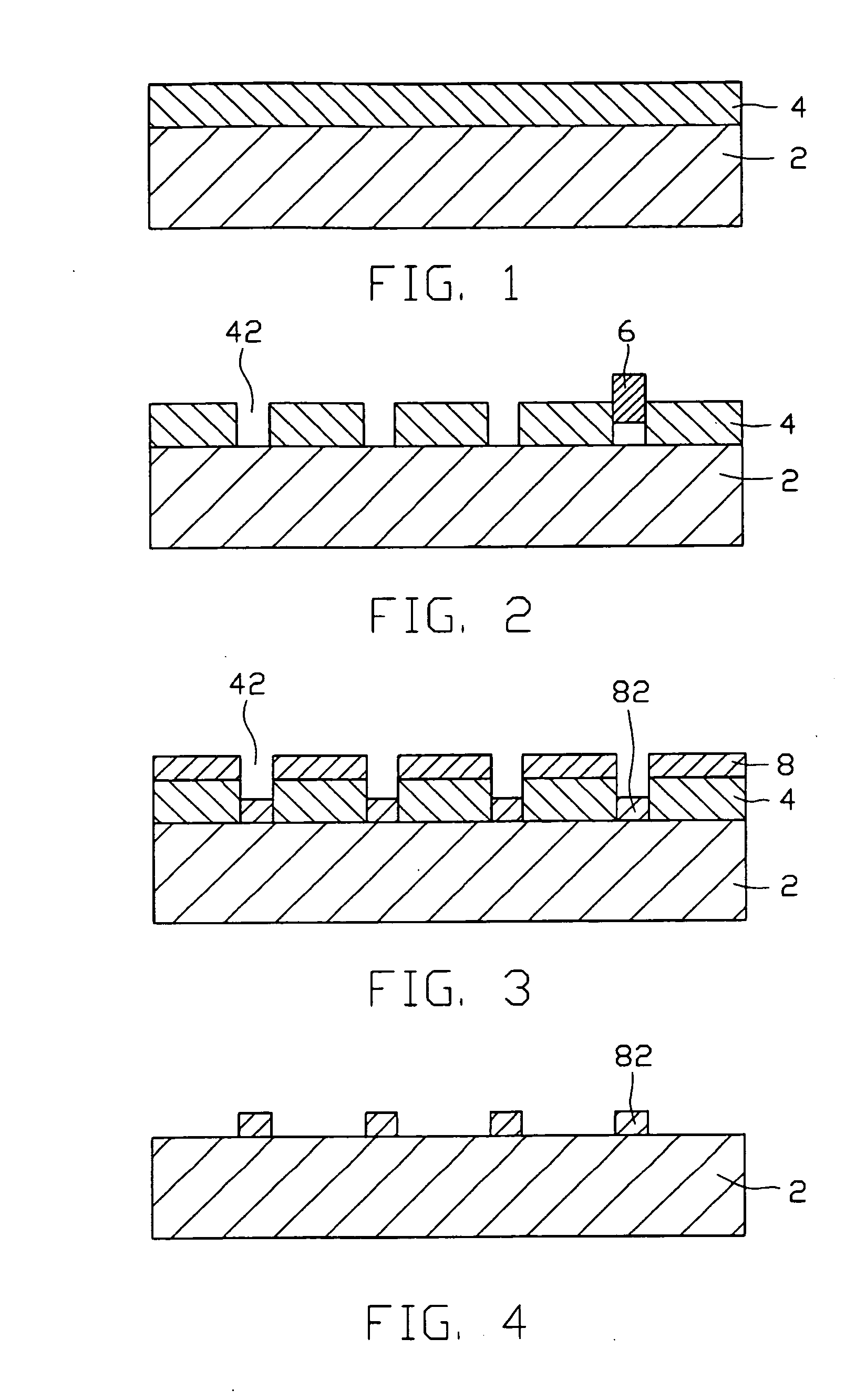Method for forming quantum dots
a quantum dot and etching technology, applied in the field of forming quantum dots, can solve the problems of inability to precisely control the size low optical quality of the quantum dot, and inferring complicated physical and optical properties
- Summary
- Abstract
- Description
- Claims
- Application Information
AI Technical Summary
Benefits of technology
Problems solved by technology
Method used
Image
Examples
Embodiment Construction
[0019] Reference will now be made to the drawings to describe embodiments of the present method, in detail.
[0020] Referring to FIGS. 1, 2, 3 and 4, a method for forming quantum dots includes the following steps: (a) depositing a metal layer 4 on a substrate 2; (b) using an atomic force microscope (AFM) probe 6 to form a plurality of nanopores 42 in the metal layer 4; (c) depositing a semiconductor layer 8 on the metal layer 4 and in the nanopores 42; and (d) removing the metal layer 4 and the portions of the semiconductor layer 8 located on the metal layer 4, thereby forming a plurality of quantum dots 82 on the substrate 2.
[0021] Referring to FIG. 1, in step (a), the substrate 2 is made of semiconductor material, such as silicon, germanium, gallium arsenide, indium gallium nitride, gallium nitride, indium nitride, and so on. In the preferred embodiment, the substrate 2 is made of silicon. The metal layer 4 has finite thermal expansion coefficient and can, advantageously, be a gol...
PUM
 Login to View More
Login to View More Abstract
Description
Claims
Application Information
 Login to View More
Login to View More - R&D
- Intellectual Property
- Life Sciences
- Materials
- Tech Scout
- Unparalleled Data Quality
- Higher Quality Content
- 60% Fewer Hallucinations
Browse by: Latest US Patents, China's latest patents, Technical Efficacy Thesaurus, Application Domain, Technology Topic, Popular Technical Reports.
© 2025 PatSnap. All rights reserved.Legal|Privacy policy|Modern Slavery Act Transparency Statement|Sitemap|About US| Contact US: help@patsnap.com


